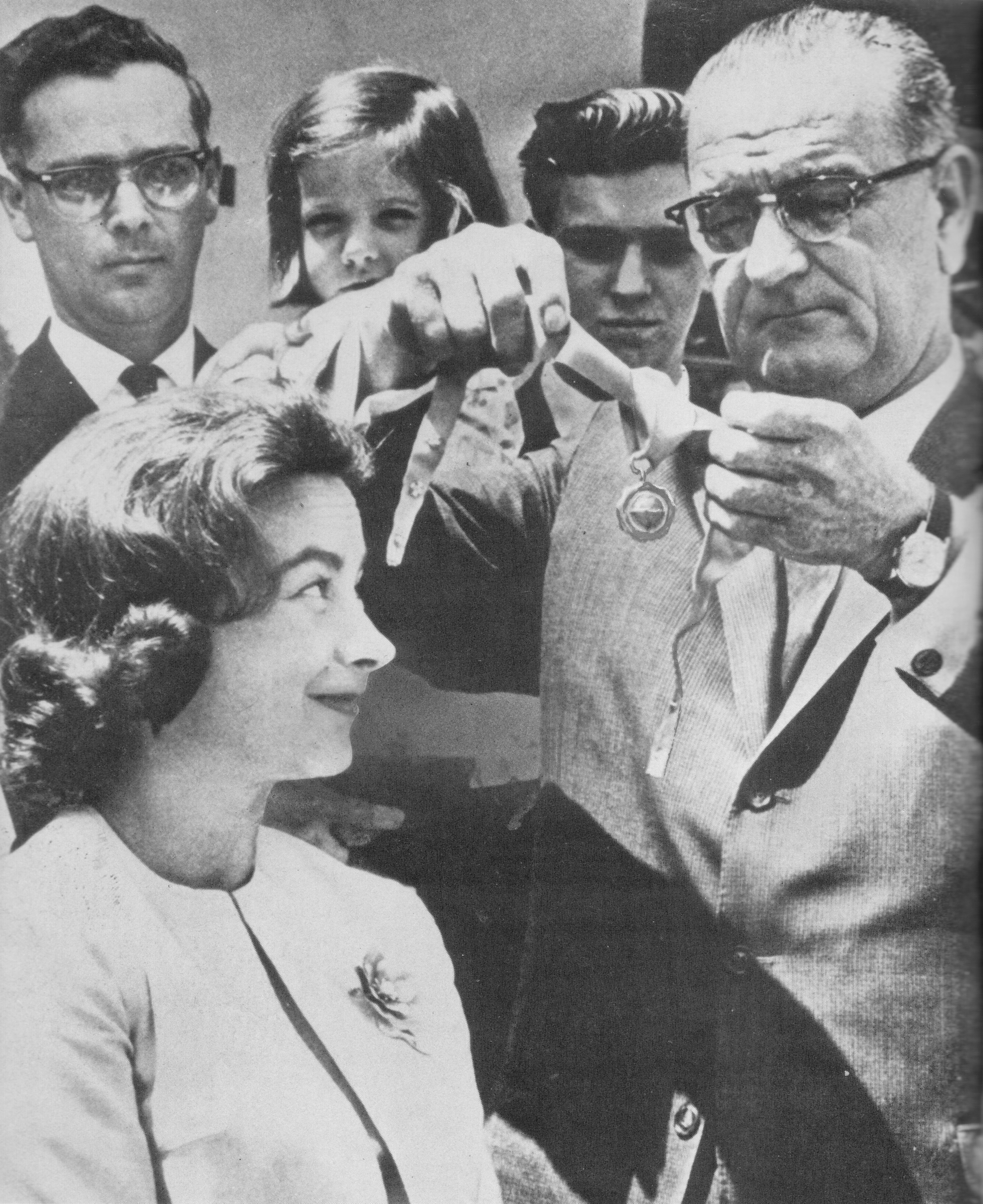Sixty years ago, Bexley resident Jerrie Mock became the first woman to fly around the world solo.
Ohio is the birthplace of several extraordinary aviators, including household names like Orville and Wilbur Wright, John Glenn, and Neil Armstrong. Among these pioneers is another remarkable aviator, Geraldine “Jerrie” Fredritz Mock, who shattered records and made history as the first female pilot to circumnavigate the globe solo. Next week, April 17, marks the 60th anniversary of the touch down of Jerrie’s historic flight, which started and ended at Port Columbus International Airport—known today as John Glenn Columbus International Airport.
Born in Newark, Ohio on November 22, 1925 to Timothy J. Fredritz and Blanche Wright Fredritz, Jerrie’s passion for flight began as a young girl when her father took her on a ride in a Ford Tri-Motor plane. Later, Jerrie would recall this flight as the moment she knew she would one day become a pilot. “I was absolutely thrilled. And when we climbed out, I said, ‘When I grow up, I’m going to be a pilot,’” Jerrie shared with Doug Kridler, President and CEO of The Columbus Foundation, during his visit to see her at her home in Florida in 2013. “I’m going to go fly my airplane around the world.”
0:00— When I was a little kid, about seven years old, I had to ride in a Ford tri motor.
0:06— We went around the circle.
0:08— We climbed out with my mother and father and I was absolutely thrilled.
0:13— And when we climbed out, I said when I grow up, I'm going to be a pilot and they smiled and patted me on the head and everything, you know.
0:20— And then Amelia Earhart was flying and, well, I also studied geography and saw pictures of camels and people riding in the desert and jungles and, well, I'm gonna fly my airplane around the world.
0:33— I want to see all these things and I want to do it by my own airplane.
0:36— Of course, I just assumed everyone was going to be flying the oceans and, you know, I'm a little kid.

Pictured: Jerrie Mock alongside her single-engine Cessna named Spirit of Columbus.
Young Jerrie idolized Amelia Earhart, who set many early aviation records and was the first female pilot to make a nonstop solo flight across the Atlantic Ocean. Tragically, Amelia disappeared in 1937 while attempting to become the first pilot ever to fly across the world. No woman would complete that risky journey until Jerrie’s successful solo flight in 1964.
After graduating from Newark High School in 1943, Jerrie attended The Ohio State University, where she majored in Aeronautical Engineering and was the only woman in her aviation engineering class. She left Ohio State to marry Russell Mock in 1945, but her passion for flight was unwavering. While the couple raised their three children in Bexley, Jerrie began taking flying lessons and earned her pilot’s license. She and Russell, who was also a pilot, enjoyed flying around the Midwest together—but Jerrie was eager to see the world.
Taking Flight
Jerrie didn’t initially set out to be a record-breaking aviator. Rather, she simply craved the adventure. After her husband Russell suggested she fly around the world, Jerrie said, “All right. I will.” Soon, Jerrie began preparing for the journey, which included charting a route, getting the necessary permissions to fly over and into various countries, and preparing her 11-year-old plane for the long, arduous flight.
On March 19, 1964, Jerrie boarded her red-and-white single-engine Cessna called Spirit of Columbus—also nicknamed Three-Eight Charlie, inspired by the plane’s registration number— to begin the historic voyage. Amid a crowd of onlookers at Port Columbus International Airport, Jerrie was cleared for take-off. Having logged just 750 hours of flying time—and having never flown over a large body of water—Jerrie was about to take the flight of a lifetime.
“The tiny plane raced down the runway and literally leaped into the air, eager to explore the world,” Jerrie recalled in her memoir, Three-Eight Charlie. “How I loved my beautiful plane!”
As she steadily climbed into the air, Jerrie heard the tower controller say over the radio, “Well, I guess that’s the last we’ll hear from her.”

Pictured: The flight path for Jerrie Mock’s historic 1964 around-the-world flight.
Not one to be deterred, Jerrie flew on with determination. Over the course of 29 days, Jerrie crossed over oceans, mountains, deserts, and jungles, making stops in Bermuda, Morocco, Algeria, Libya, Egypt, Saudi Arabia, India, Thailand, Guam, and more. Although the journey was not without difficulty—Jerrie encountered weather delays and mechanical issues, among other challenges—her bravery and skill prevailed.
On April 17, 1964, after flying roughly 23,000 miles, Jerrie returned to Port Columbus International Airport, now the first woman ever to successfully fly solo across the globe. What’s more, Jerrie became the first woman to fly solo across both the Atlantic and Pacific oceans. She also set an around-the-world speed record for men and women in an aircraft weighing less than 3,800 pounds.
Not long after she landed, Jerrie remarked, “I hope…that somewhere here and there, just my doing something that hadn't been done, will encourage someone else who wants to do something very much, and hasn't quite had the heart to try it.”
An Ongoing Legacy

Pictured: Jerrie Mock receiving the Federal Aviation Agency’s Gold Medal for Exceptional Service by President Lyndon B. Johnson on May 4, 1964. Photo courtesy of Smithsonian Institute.
Soon after returning to Columbus, Jerrie was invited to The White House and presented with the Federal Aviation Agency’s Gold Medal for Exceptional Service by President Lyndon B. Johnson. In 1965, Jerrie was awarded the Louis Blériot Medal from the Fédération Aéronautique Internationale, the organization’s highest honor. Over the years, Jerrie and her historic flight has been commemorated in other ways, including through her induction into the City of Columbus Hall of Fame and the Paul E. Garber First Flight Shrine in Kill Devil Hills, North Carolina.
On April 17, 2014—to celebrate the 50th anniversary of her journey—a life-sized bronze statue of Jerrie holding a globe, created by Columbus artist Renate Burgyan Fackler, was unveiled at John Glenn Columbus International Airport. Jerrie’s beloved Spirit of Columbus is also currently on display at the National Air and Space Museum in Washington, D.C.
In 2013, The Columbus Foundation established The Spirit of Columbus® Award—also known as The Jerries®—in recognition of her bravery, boldness, and determination. The award is given annually to individuals in the central Ohio community who have exhibited an exemplary community spirit through their accomplishments. Naturally, Jerrie was the first to receive The Spirit of Columbus® Award.

Pictured: The Spirit of Columbus® Award installation at The Columbus Foundation. Photo by Challen Brown.
In 2022, as The Columbus Foundation marked its 10th year of celebrating The Spirit of Columbus® Award, the Foundation unveiled a new installation featuring past and current honorees. The installation, created by local design firm TENFOLD, is on permanent display at The Columbus Foundation.
Jerrie passed away in 2014 at the age of 88, but her legacy continues today. Shortly before her passing, Jerrie told the Smithsonian Institution’s Air & Space Magazine, “There were women who told me that they flew because of me.”
She added, “I’m glad I did what I did, because I had a wonderful time.”
Jerrie Mock's memoir, Three-Eight Charlie, is available at 38Charlie.com.
